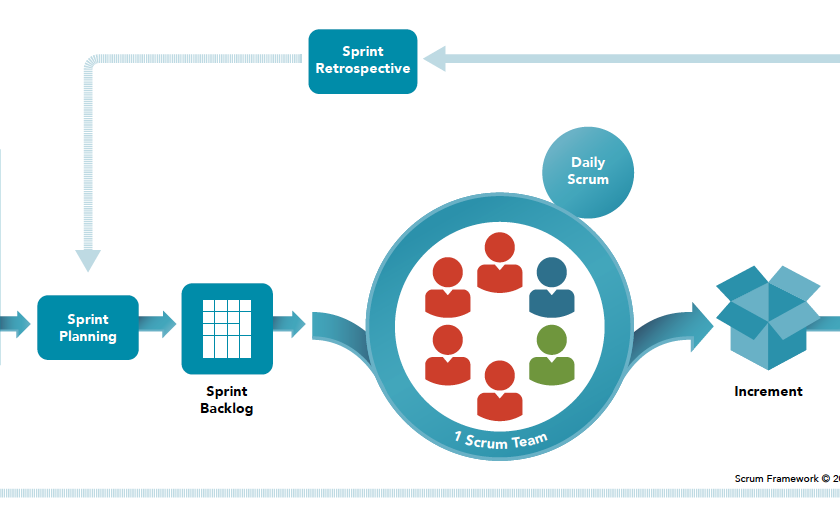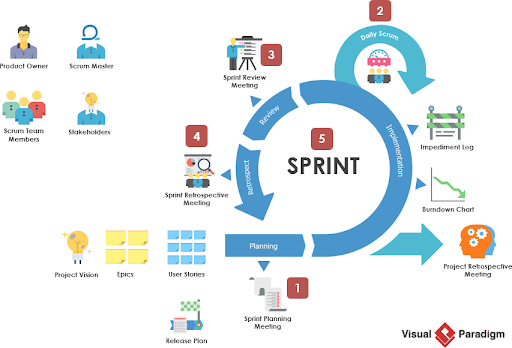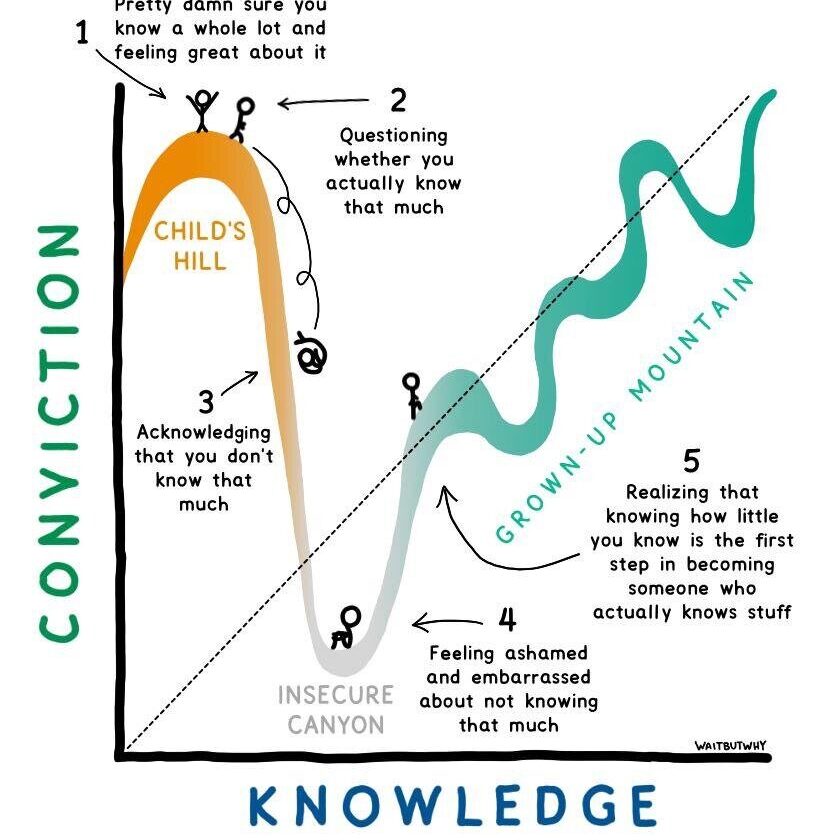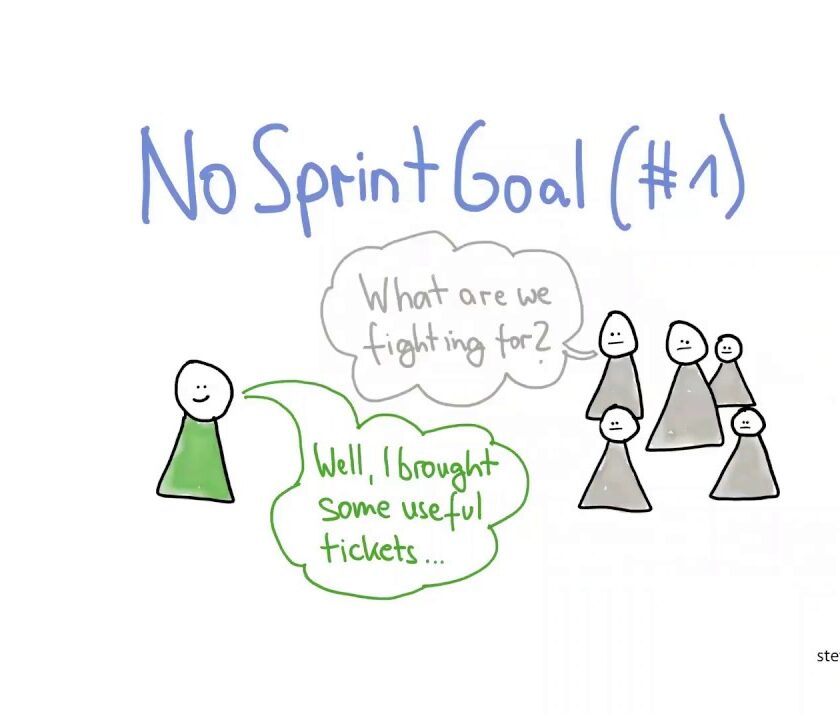Contents
- What is Scrum?
- The Scrum Team
- The Scrum Events
- The Scrum Artifacts
What is Scrum?
Scrum is an agile framework to help people and teams deliver value incrementally in a collaborative way .
Scrum has three pillars: transparency, inspection and adaptation
The Scrum Values of Courage, Focus, Commitment, Respect, and Openness, are all important elements that Scrum Team members must consider when working together
The diagram below details the iterative Scrum lifecycle. The entire lifecycle is completed in fixed time periods called sprints. A sprint is typically one-to-four weeks long.

The Scrum Team
There are three key roles in Scrum: the product owner, the Scrum master, and the Scrum team.
Product owner
The product owner is responsible for what the team builds, and why they build it. The product owner is responsible for keeping the backlog of work up to date and in priority order.
- Developing and explicitly communicating the Product Goal
- Creating and clearly communicating Product Backlog Items
- Ordering Product Backlog Items
- Ensuring that the Product Backlog is transparent, visible and understood
The Product Owner may do this work or delegate the responsibility to others on the Scrum Team. Regardless of who does the work, the Product Owner remains accountable for it being accomplished and for the value delivered.
Scrum master
The Scrum master ensures that the Scrum process is followed by the team. Scrum masters are continually on the lookout for how the team can improve, while also resolving impediments and other blocking issues that arise during the sprint. Scrum masters are part coach, part team member, and part cheerleader.
helps the Scrum Team:
- By coaching the team members in self-management and cross-functionality
- Focus on creating high-value Increments that meet the Definition of Done
- Influence the removal of impediments to the Scrum Team’s progress
- Ensure that all Scrum events take place and are positive, productive, and kept within the timebox.
helps the Product Owner:
- Find techniques for effective Product Goal definition and Product Backlog management
- Provide ways for the Scrum Team to understand the need for clear and concise Product Backlog items
- Establish empirical product planning for a complex environment
- Facilitate stakeholder collaboration as requested or needed
supports the Organization:
- By Leading, training and coaching them in their Scrum adoption
- By helping employees and stakeholders understand and instill an empirical approach for complex work
- Remove barriers between stakeholders and Scrum Teams
Developers
The members of the Scrum team actually build the product. The team owns the engineering of the product, and the quality that goes with it.
Developers are always accountable for:
- Creating a plan for the Sprint, the Sprint Backlog
- Instilling quality by adhering to a Definition of Done
- Adapting their plan each day toward the Sprint Goal
- Holding each other accountable as professionals
The Scrum Events
What is a Sprint?
Sprints are the heartbeat of Scrum, where ideas are turned into value. The Sprint is the Scrum event that encompasses all of the other Scrum events.

All the work necessary to achieve the Product Goal, including Sprint Planning, Daily Scrums, Sprint Review, and Sprint Retrospective, happen within Sprints.
Sprints enable predictability by ensuring that the Scrum Team inspects and adapts toward the Product Goal and Sprint Goal each Sprint:
What is Sprint Planning?
Sprint Planning initiates the Sprint by laying out the work to be performed for the Sprint
Topic One: Why is this Sprint valuable?
Topic Two: What can be Done this Sprint?
Topic Three: How will the chosen work get done?
What is a Daily Scrum?
Daily Scrum is to inspect progress toward the Sprint Goal and adapt the Sprint Backlog as necessary, adjusting the upcoming planned work.
The Daily Scrum is a 15-minute event for the Developers of the Scrum Team with 3 questions for each developer
- What you have done yesterday?
- What you will do today?
- Is there any blocker your tasks?
What is a Sprint Review?
Sprint Review is to inspect the outcome of the Sprint and determine future adaptations. The Scrum Team presents the results of their work to key stakeholders and progress toward the Product Goal is discussed.
What is a Sprint Retrospective?
Sprint Retrospective is to plan ways to increase quality and effectiveness.
Examples:
- The Three Little Pigs: House of straw, House of sticks, House of bricks
- The three Ls: Like, Learn, Lack
- Mad, Sad, Glad
- Good, Bad, Try
The Scrum Artifacts
What is a Product Backlog?
The Product Backlog is an emergent, ordered list of what is needed to improve the product. It is the single source of work undertaken by the Scrum Team.
What is a Product Goal?
The Product Goal provides context to the Product Backlog. The Product Goal describes a future state of the product which can serve as a target for the Scrum Team to plan against. The Product Goal is the long-term objective for the Scrum Team.
What is a Sprint Backlog?
The Sprint Backlog is composed of the Sprint Goal (why), the set of Product Backlog items selected for the Sprint (what), as well as an actionable plan for delivering the Increment (how).
What is a Sprint Goal?
The Sprint Goal is the single objective for the Sprint. Although the Sprint Goal is a commitment by the Developers, it provides flexibility in terms of the exact work needed to achieve it.
What is an Increment?
An Increment is a concrete stepping stone toward the Product Goal.
What is a Definition of Done?
Definition of Done is a formal description of the state of the Increment when it meets the quality measures required for the product. Once the Definition of Done is met, the Increment is Done and can be delivered.





